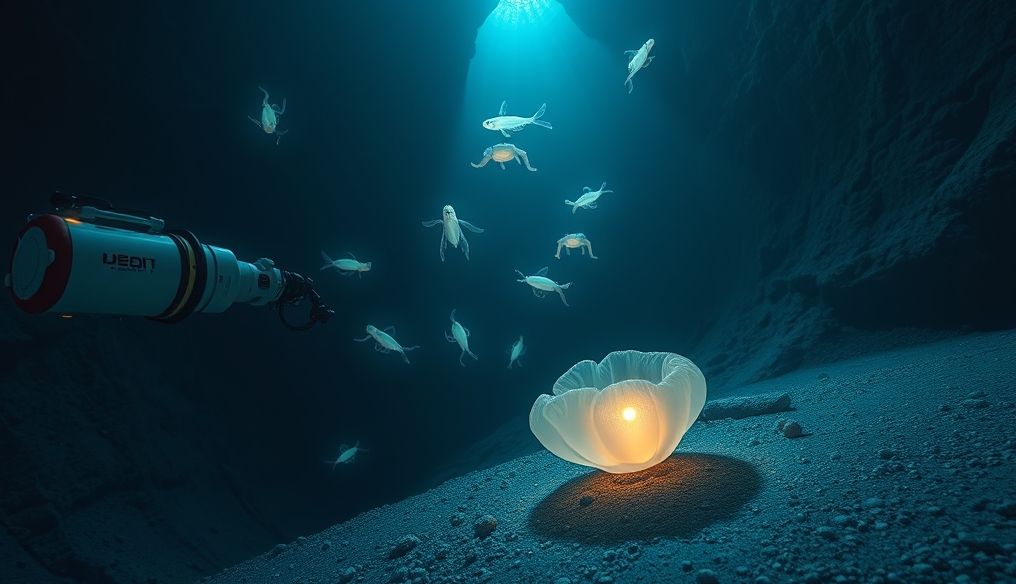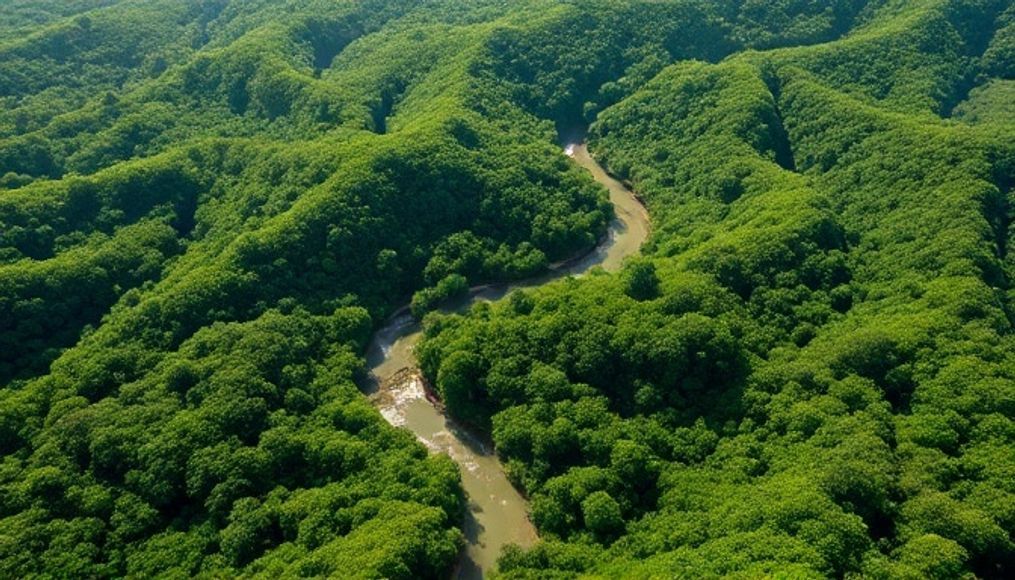What is the deepest point in the world's oceans and what lies hidden within?
Oceans are largely unexplored territories, concealing countless secrets in their depths. Among these secrets, one point stands out as the deepest known place on Earth: the Mariana Trench.
1. Introduction to the Mariana Trench
The Mariana Trench is located in the western Pacific Ocean, east of the Mariana Islands. It stretches in a crescent shape for about 2,550 kilometers (1,580 miles) long and 69 kilometers (43 miles) wide. This trench is part of a larger system of oceanic trenches formed by tectonic subduction, where one oceanic plate slides beneath another.
2. Challenger Deep: The Deepest Point in the Mariana Trench
Within the Mariana Trench lies the Challenger Deep, the deepest known point in the oceans. Its depth has been measured several times, with modern estimates placing it at approximately 10,935 meters (35,876 feet) below sea level. For comparison, this depth is greater than the height of Mount Everest.
3. How was the Challenger Deep discovered and its depth measured?
The Mariana Trench was first discovered by the British research vessel "Challenger" in 1875. The ship used weighted ropes to lower weights to the ocean floor to measure the depth. In 1951, the "Challenger II" conducted more accurate measurements using sonar technology, confirming that the Mariana Trench is the deepest point in the oceans.
4. The Extreme Conditions in the Depths of the Mariana Trench
The depths of the Mariana Trench are characterized by extremely harsh conditions, including:
- Immense Pressure: The pressure at the bottom of the trench is about 1,086 bars (15,751 psi), which is more than 1,000 times the standard atmospheric pressure at sea level.
- Complete Darkness: Sunlight does not reach these depths, making it completely dark.
- Low Temperature: The temperature near the freezing point, around 1-4 degrees Celsius (34-39 degrees Fahrenheit).
5. Life in the Mariana Trench: Amazing Adaptations
Despite the harsh conditions, the Mariana Trench is not devoid of life. Scientists have discovered a variety of organisms that have adapted to this extreme environment, including:
- Mollusks: Some species of small mollusks live on the trench floor, feeding on organic matter that falls from above.
- Hadal Fish: A few species of hadal fish have been found in the depths of the trench, characterized by their ability to withstand the immense pressure.
- Amphipods: These are small crustacean shrimp-like creatures that play an important role in the ecosystem of the trench floor.
- Bacteria: Bacteria play a vital role in decomposing organic matter and providing food for other organisms.
6. Modern Explorations of the Mariana Trench
In recent years, many modern explorations of the Mariana Trench have been conducted using robotic submersibles and manned submersibles. These explorations have allowed scientists to collect samples from the trench floor and study marine life in its natural environment.
7. Challenges Facing the Exploration of the Mariana Trench
Exploring the Mariana Trench still faces many challenges, including:
- High Cost: Building and operating submersibles and robotic vehicles capable of reaching these depths is extremely expensive.
- Extreme Conditions: The immense pressure, complete darkness, and low temperature make exploration difficult and dangerous.
- Distance: The Mariana Trench is located in a remote area of the Pacific Ocean, which increases the cost and time of expeditions.
8. The Scientific Importance of the Mariana Trench
Despite the challenges, exploring the Mariana Trench is of great scientific importance, as it can help us:
- Understand Life in Extreme Conditions: Studying the organisms that live in the Mariana Trench can help us understand how life adapts to extreme conditions, and may provide insights into the origin of life on Earth and perhaps elsewhere in the universe.
- Study Geological Processes: Studying the Mariana Trench can help us understand the geological processes that shape the ocean floor and the movement of tectonic plates.
- Discover New Resources: The Mariana Trench may contain valuable natural resources, such as rare minerals and unique chemical compounds.
9. Pollution in the Mariana Trench: A Hidden Threat
Despite its remoteness and depth, the Mariana Trench is not immune to human pollution. Plastic materials and other pollutants have been found on the trench floor, threatening the unique marine life that lives there. Steps must be taken to reduce pollution and protect this fragile environment.
10. The Future of Mariana Trench Exploration
With the development of technology, the exploration of the Mariana Trench is expected to become easier and more cost-effective in the future. We may see more robotic submersibles and manned submersibles exploring these depths, revealing more secrets about life in the oceans.
In conclusion, the Mariana Trench is a unique and amazing place that deserves more study and exploration. It represents a major scientific challenge, but also provides an opportunity to discover new secrets about life on Earth.




